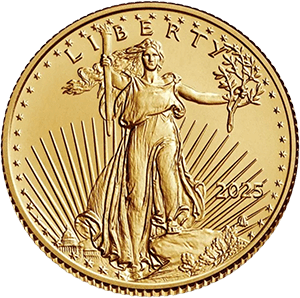Gold Through the Ages: Why Humanity’s Oldest Treasure Still Reigns Supreme
Gold has captivated humanity for thousands of years. From the pharaohs of ancient Egypt to modern investors protecting their retirement portfolios, gold has remained a symbol of power, stability, and wealth. But what is it about this radiant metal that has stood the test of time? Why, in an era of digital currencies and high-tech assets, do we still turn to gold when markets grow uncertain?
To understand gold’s timeless value, we must first journey through history.
The Dawn of Gold’s Legacy: Ancient Civilizations and Royal Treasure
The earliest known use of gold dates back to around 4000 BC in Eastern Europe, where Neolithic communities used it for decorative purposes. But it was the Egyptians, around 2600 BC, who first associated gold with divinity and immortality. Pharaohs were buried with intricate gold artifacts, and the famed Mask of Tutankhamun, gleaming in pure gold, remains one of history’s most iconic symbols of eternal wealth.
Gold’s scarcity and luster made it a universal sign of status and spiritual power. Across Mesopotamia, the Indus Valley, and the early Chinese dynasties, gold was reserved for the elite and gods. The Greeks later dubbed it chrysos, meaning “to shine,” and Plato called it a gift from the gods.
Currency and Commerce: Gold as Money
Gold’s role evolved from ornamentation to currency. By 600 BC, the Lydians—in modern-day Turkey—minted the first gold coins, formalizing its place in trade. These coins became the foundation of commerce throughout the ancient world, setting the stage for centuries of monetary systems based on gold’s intrinsic value.
Fast forward to the Roman Empire, where gold coins funded armies, built roads, and fueled expansion. Gold wasn't just a store of wealth—it became the engine behind empires.
The Gold Standard: Anchoring Modern Economies
By the 19th century, nations formalized gold’s role with the Gold Standard, linking paper currency to fixed amounts of gold. This brought stability to global economies, restrained inflation, and promoted trust in financial systems.
But after World War II, the Bretton Woods Agreement pegged world currencies to the U.S. dollar, which in turn was backed by gold—until 1971, when President Nixon ended dollar convertibility. Even so, gold did not lose its luster. Instead, it became a hedge against inflation, currency volatility, and political unrest.
Modern-Day Gold: Wealth Protection in an Uncertain World
Today, gold holds a different kind of power. With fiat currencies subject to inflation and economic instability, gold has become the go-to asset for long-term security. During the 2008 financial crisis and more recently, in times of rising inflation and geopolitical tension, gold prices surged as investors sought safety.
Gold doesn’t default, it doesn’t go bankrupt, and it doesn’t evaporate with a market crash. It’s not just a shiny rock—it’s real money in a world of paper promises.
Why Gold Still Matters—and Why You Should Care
So why does gold continue to hold such sway?
Because it always has.
Gold is the only asset that has maintained its value for over 5,000 years, through wars, depressions, currency collapses, and revolutions. And in today’s environment of market volatility, inflation, and global uncertainty, gold offers what few assets can: trust, liquidity, and enduring value.
Secure Your Wealth with American Standard Gold
At American Standard Gold, we understand the importance of protecting your financial future with assets that stand the test of time. Our experts are here to help you diversify your portfolio with physical gold and silver—whether through a Precious Metals IRA or direct ownership.
Gold’s historical journey is far from over. In fact, your journey with gold may just be beginning.
Take the first step toward financial security today—invest with American Standard Gold.
👉 Get Your Free Precious Metals IRA Guide Now
👉 Schedule a Call with a Gold Specialist










